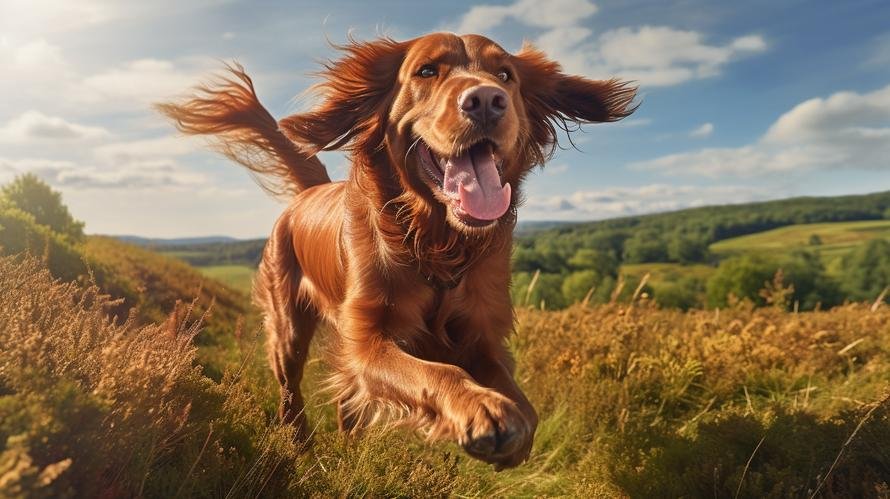If we could ask Lassie, the world’s most famous film dog, what breed of dog would rule supreme, chances are she’d be stumped. After all, every dog breed is unique and brings its own set of qualities to the table. So, let’s explore a breed that often raises a fair amount of eyebrows – the charming, feisty, and oh-so-red Irish Setter.
Oh boy, are Irish Setters a hoot or what? Known for their flaming red coats and bouncy spirits, these dogs are almost like the ‘Beyoncé’ of the dog world – full of sass, flash, and endless energy. But there’s a question that has dog lovers divided: Are Irish Setters dangerous dogs?
While some stories may paint these dogs as aggressive or volatile, nothing could be further from the truth. Often, this misconception arises from a misunderstanding of the breed’s quirky character and spirited nature.
Let’s start with some canine trivia. The Irish Setter, also known as the Red Setter, hails from Ireland and was initially bred to be a ‘gun dog,’ helping hunters find upland game birds. But hold on a second, ‘gun dog’ sounds intimidating, doesn’t it? However, the term simply refers to dogs trained to assist hunters – not to be feared.
Now, onto the perception of danger. Irish Setters are far from being a dangerous breed. Instead, they’re energetic, intelligent, and extremely affectionate dogs who thrive on human companionship. Trust me, an Irish Setter is more likely to lick you to death than present any sort of threat!
Often, the setter’s vivacious personality can be mistaken for hyperactivity or aggression, which is where our misunderstanding lies. Over centuries, they were bred for their high energy levels and stamina in the hunting field, which directly translates into their modern-day behavior. In other words, they’re canine athletes who are simply made to move. Imagine having the energy of a ten-year-old on a sugar high – that’s an Irish Setter for you!
However, here’s a handy tip for managing this limitless energy: Regular exercise routines. With their hunting ancestry, Irish Setters require plenty of physical activities to keep them mentally, emotionally, and physically balanced. Think of it as a daily marathon – the more they run, the happier, and more relaxed they are throughout the day.
But exercise alone isn’t going to keep an Irish Setter docile. Their sharp brains require just as much mental stimulation to remain happy. This could be in the form of puzzle toys, obedience training, or even dog sports like flyball.
The key to understanding the Irish Setter lies in their temperament. They are friendly, mischievous, and incredibly good with children, making them excellent family dogs. They’re known to mature slowly (Why rush adulthood, anyway?), so don’t be surprised if your Irish Setter acts like a puppy well into its older years.
All said, Irish Setters can become irritable and destructive if neglected or bored – so they are not suitable if you’re out most of the day or have a small, restrictive living environment. This does not make them dangerous, only misunderstood.
Additionally, they are known for their hard-headed streak, which sometimes can give the impression of an ‘aggressive dog.’ But here’s a fun fact! This supposedly hard-headed nature is nothing but a display of their intelligence and independence. A good training routine from puppyhood will ensure obedience without breaking their spirit.
Now you may be thinking about the challenging bits of raising an Irish Setter. Here’s some useful advice. Regular grooming is a must to keep those resplendent red coats shining bright. And although they’re generally healthy, Irish Setters can be prone to a few genetic health problems, so it’s essential to get them from a responsible breeder who tests their breeding dogs’ health.
In a nutshell, Irish Setters, like any other breed, need dedicated time, love, and care to bring out their true characteristics. They’re not dangerous dogs; instead, they’re a bundle of joy, radiating energy, and affection. For those willing to embrace their vitality and reward it with care and attention, they make a delightful and loyal companion. Just remember, a tired dog is a good dog!
So, next time you hear someone asking, “Is an Irish Setter a dangerous dog?”, you can confidently say, “No, they’re an Irish joy!”



